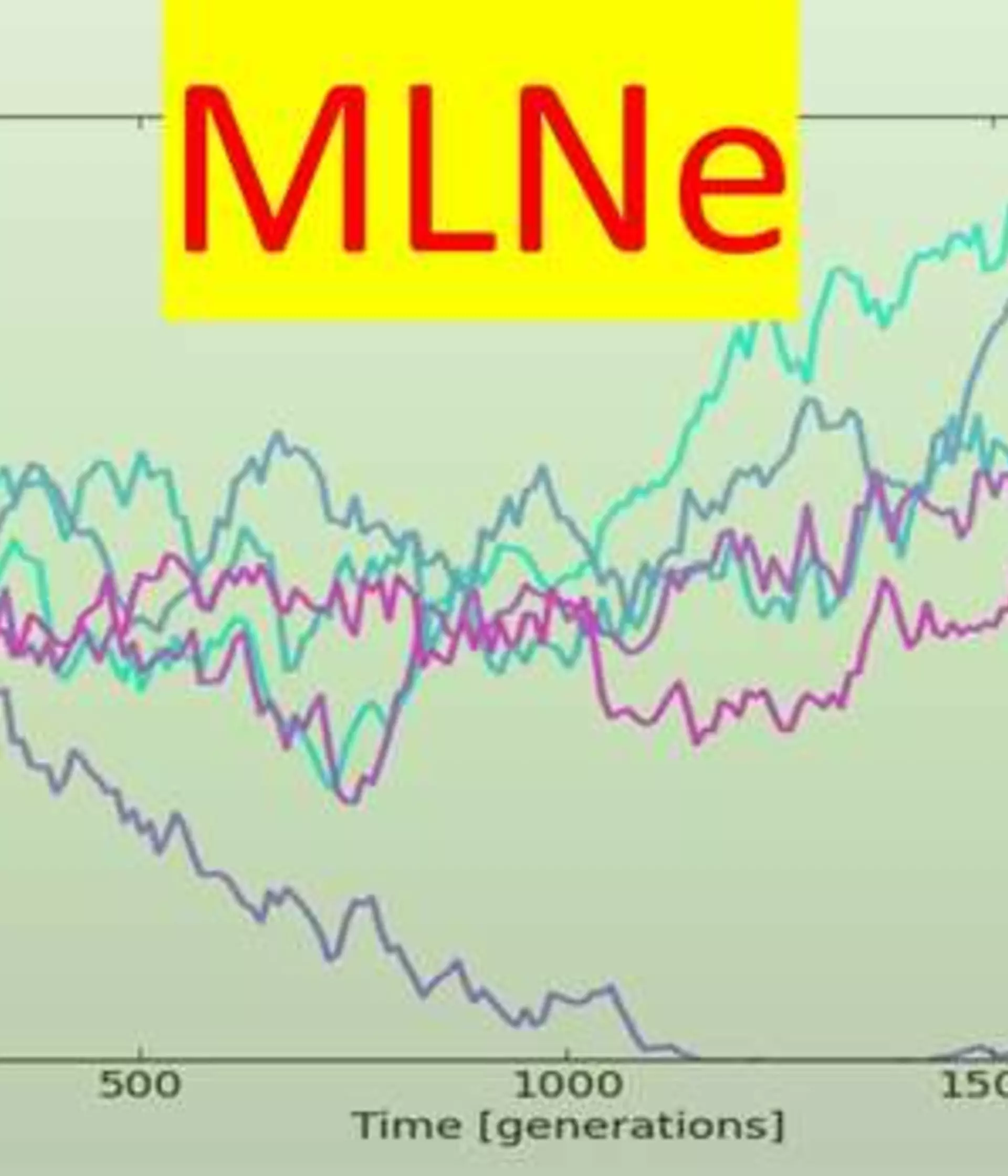MLNe is a program for calculating maximum likelihood estimates of effective population size (Ne) and migration rate from the observed temporal and spatial differences in marker allele frequencies.
The program, implementing the methods described in the publications below, was written by Jinliang Wang.
- Wang J. (2001) A pseudo-likelihood method for estimating effective population size from temporally spaced samples. Genetical Research 78: 243-257.
- Wang, J. and Whitlock, M. C. (2003) Estimating effective population size and migration rates from genetic samples over space and time. Genetics 163: 429-446.
- Wang, J. (2022) MLNe: Simulating and estimating effective size and migration rate from temporal changes in allele Frequencies. Journal of Heredity 113: 563-567.
The frequency of an allele in a population can change over time due to selection, mutation, migration and drift. The observed changes in allele frequency, therefore, can be used to infer the genetic mechanisms (parameters) acting on the alleles or the population in which they are found.
For most empirical studies measuring the temporal changes in allele frequency, it is often legitimate to ignore the effects of mutations because of their rare occurrences and the short time span involved.
It is usually plausible to neglect the effects of direct or indirect selection on most markers as well, because such selections are unlikely to be generally strong enough to cause substantial changes in allele frequencies.
However, the effects of migration are not negligible for most populations. A major weakness of the previous temporal methods is that they ignore the effects of migration, which can substantially bias the estimates of Ne, either upwards or downwards.
This Fortran program, based on the moment and likelihood methods developed by Wang & Whitlock (2003), can be used to estimate the effective population size (Ne) and immigration rate (m) jointly from temporal and spatial data on genetic markers.
The methods assume an infinitely large source population providing immigrants into the focal population whose Ne and m are to be estimated.
However, the methods are very robust to violations of the assumption, and can be applied approximately to a finite source population consisting of one or more small subpopulations (Wang & Whitlock 2003).
Both moment and likelihood estimates of Ne and m are obtained from the program, and 95% confidence intervals of the likelihood estimates are also available.
As a special case, the Ne of a single isolated population can also be estimated using this program.
